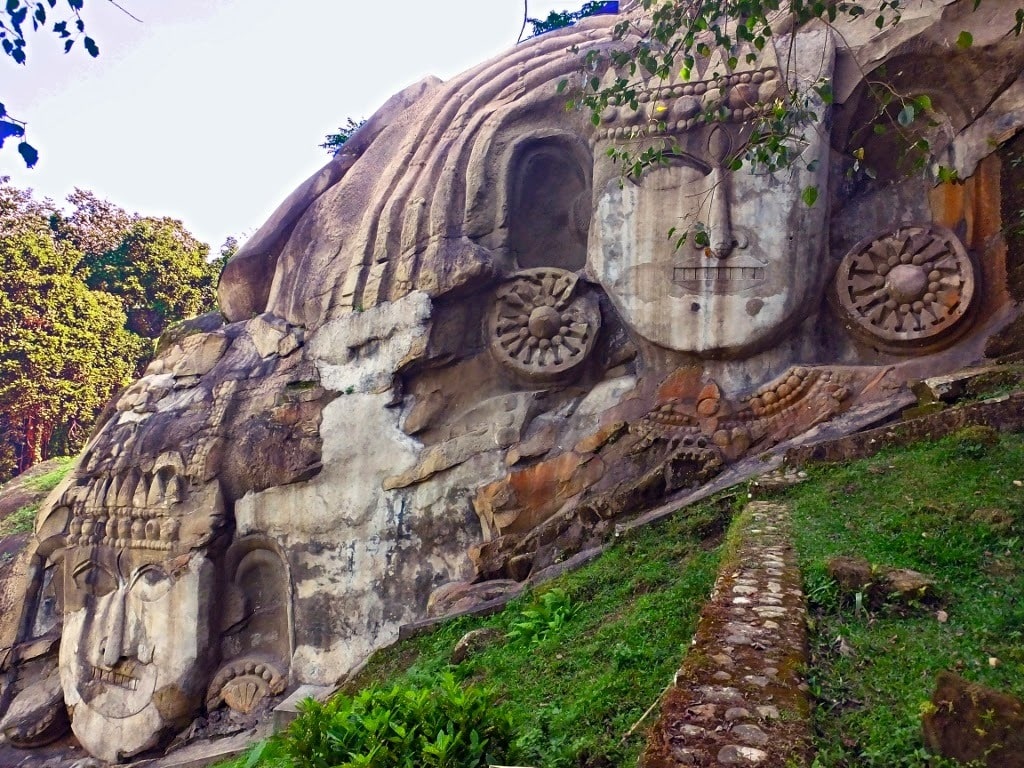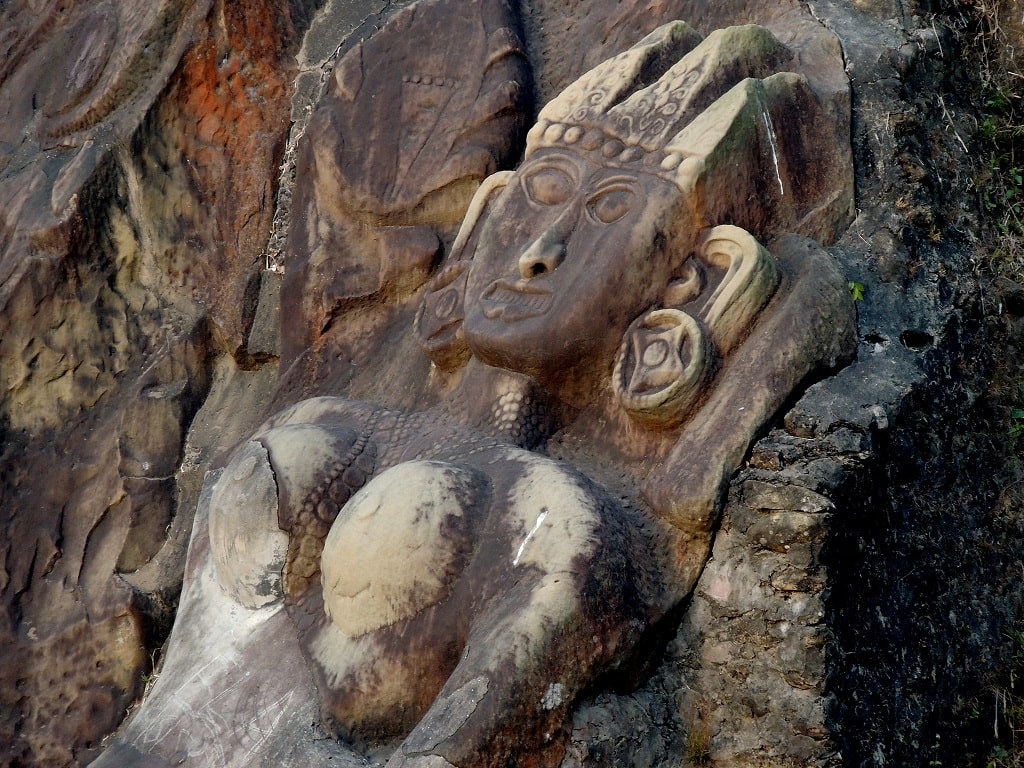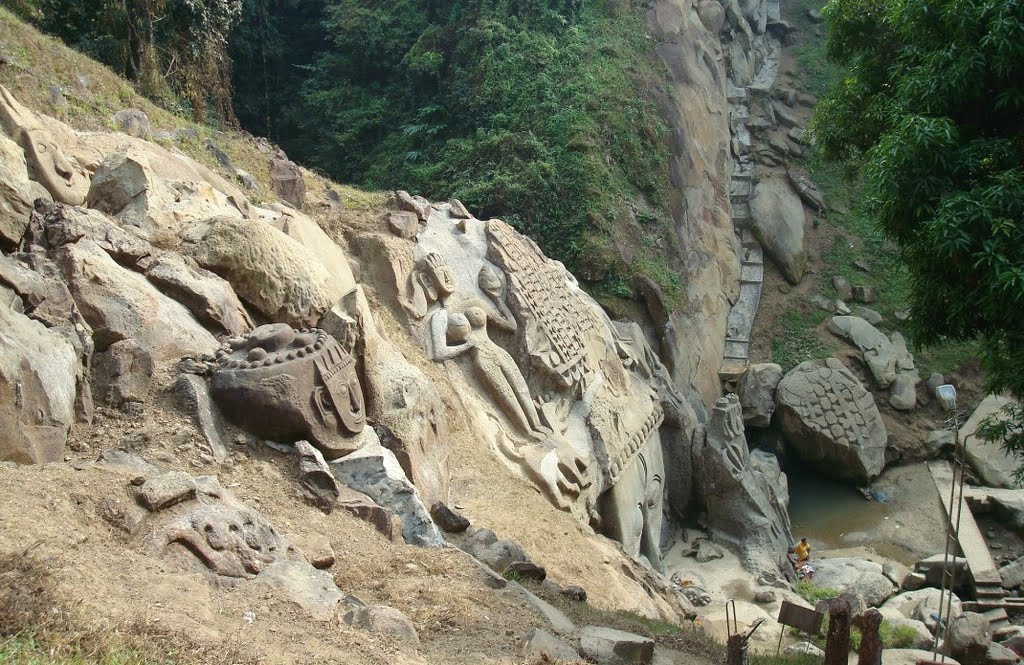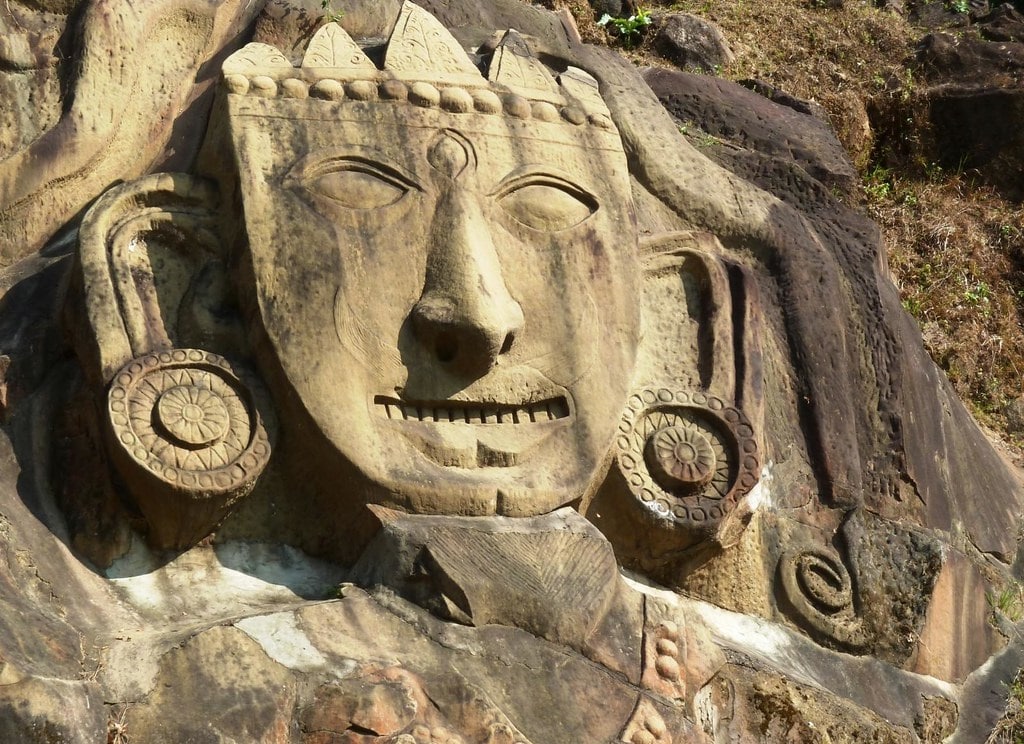Unakoti is a unique place, which can not be compared to any other place in the country in terms of absolute grandeur and artistry. Located about 178 km from Agartala, capital of Tripura, this site consists of several huge vertical rock-cut carvings on a hill side. Huge sculptures were chiseled out from the rock-sides and the images were carved. The site is situated between the lush green forests and mountains.
The beauty of the carvings and the ethnicity of the sculptures have been enhanced by the greenery surrounding it and protecting it throughout the ages. Unakoti has the largest rock-cut images and stone idols of Lord Shiva in India.
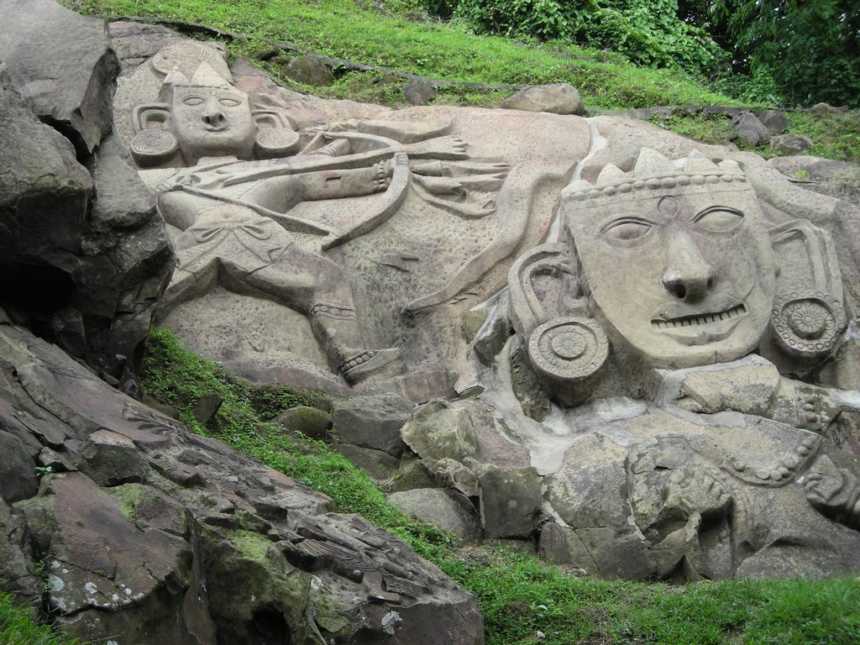
History
Who created such marvelous rock carvings and the stone images of gods and Goddesses in such a deep forest hundred years ago is indeed a mystery. Why this secluded hilly place was selected for the purpose is not known. Archaeologists are still working on this place to find more about its history.
According to some archaeologists these idols were sculpted by master sculptors elsewhere and were brought in Unakoti with great care. It is assumed that the site dates back to the period between the 7th – 9th Centuries A.D, and that the sculptures belong to two different periods of art.
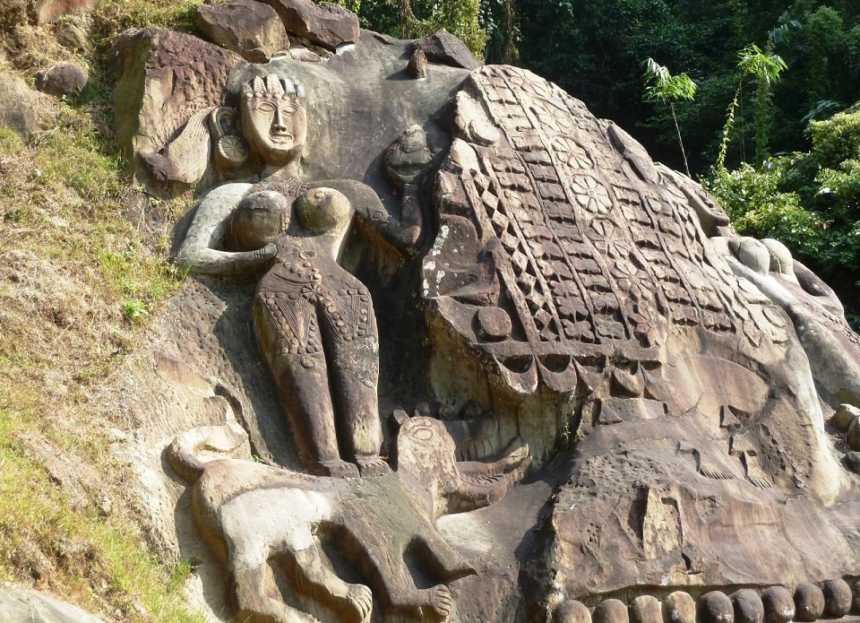
Myths & Legends of Unakoti
The name Unakoti means ‘one less than a crore’ (a crore being a unit in the Indian Numbering System which is equivalent to ten million in the Numbering System), and has its origins in Hindu mythology.
According to Hindu belief, the god Shiva was travelling to Kashi (Varanasi), one of the holiest cities in India, along with an entourage of deities. Including Shiva, these deities numbered at ten million. When the deities arrived at Unakoti, they decided to stay for the night. Before going to sleep, Shiva had instructed his entourage to wake up at sunrise so as to continue their long journey. When dawn broke the next day, however, only Shiva was awake, whilst the rest of the deities were still fast asleep. As a result, Shiva continued his journey to Kashi on his own. In addition, Shiva cursed his fellow deities, and turned them into stones. Hence, Unakoti’s name refers to the number of deities turned into stone by the enraged Shiva.
There is also an alternative myth regarding the way Unakoti got its name. This myth is about a famous sculptor Kalukumar saw Lord Shiva in his dream. He was asked by the Lord to carve out one crore images in a single night to make the site as sacred as Varanasi. The sculptor, along with his associates worked all night and were able to almost complete the creation of one crore sculptures. However, when Kalukumar was just short of one sculpture, the idea dawned on him to carve out his own figure to attain immortality but before he could complete his work, day broke out and the massive task of one crore sculptures and figures remained incomplete. Although the bas-reliefs in Unakoti may be the work of Kalu Kamar, in truth nobody really knows who made them.
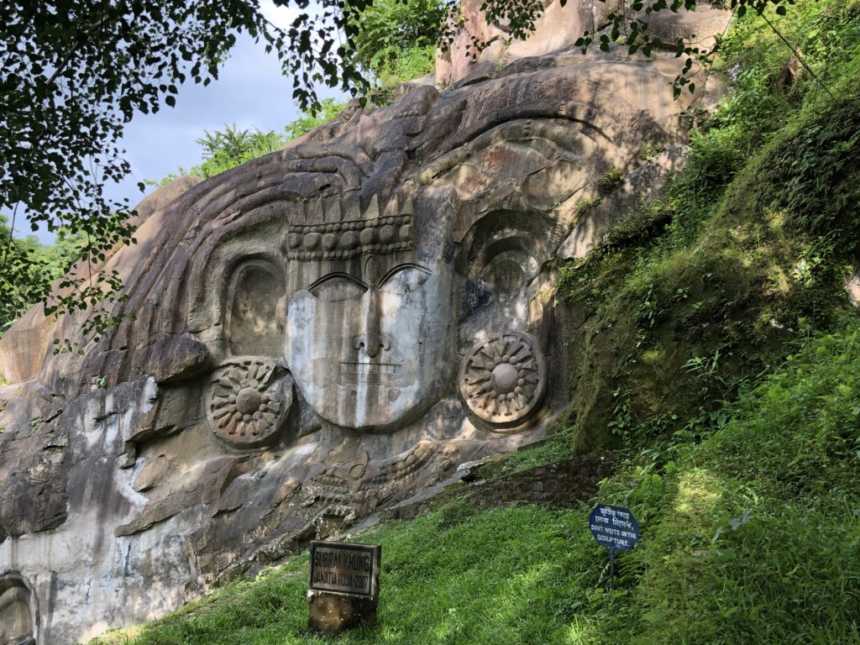
Stone Carvings of Unakoti
The images found at Unakoti are of two types namely rock-carved figures and stone images. Among the carved-out images on the rocky fringes those of Ganesha and Shiva are prominent. The central Shiva head known as Unakotiswara Kal Bhairava is about 30 feet high including an embroidered head-dress which itself is 10 feet high. On each side of the head-dress of the central Shiva, there are two full size female figures – one of Goddess Durga standing on a lion and the other one is believed to be that of Goddess Ganga.
A huge Lord Ganesha figure is carved in the Unakoti complex, while there is also a chaturmukha Shivlinga nearby. In addition three enormous images of Nandi Bull are found half buried in the ground. Among other rock-cut and stone images are those of Vishnu, Narasimha, Ravana, Hanuman, and several unidentified deities. The place also shows strong evidence of Buddhist occupation.
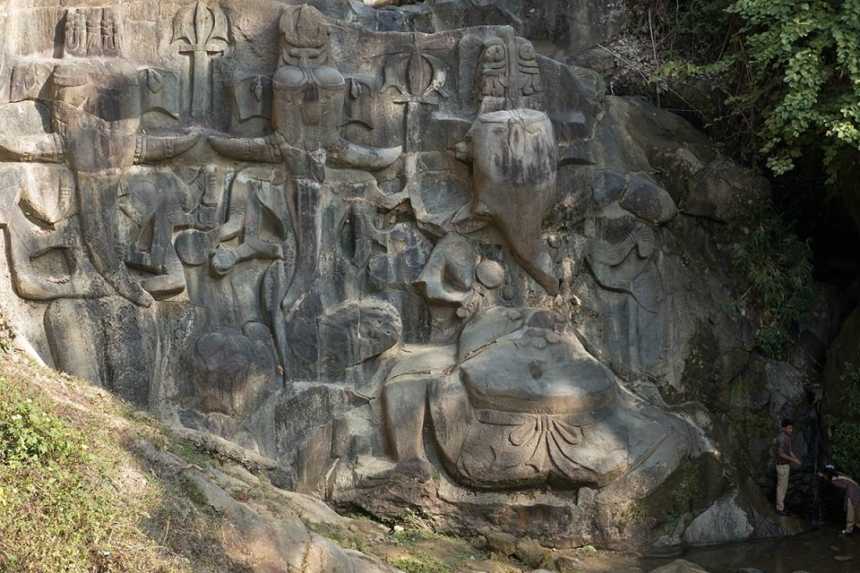
In 16th century A.D, Kalapahad – a Muslim general of Mughal governor of Bengal – caused huge destruction to the site. He destroyed Bhubaneswar Shiva and Tungeswar Shiva stationed nearby. Later gradual change in nature too had adverse impact on spectacular art work of human race.
Every year a big fair popularly known as ‘Ashokastami Mela’ is held in the month of April which is visited by thousands of devotees.
The stone carvings in Unakoti are one of the most detailed ones in India and yet, this place is rarely visited. The site has suffered centuries of neglect causing degradation and loss of considerable scale to the rock art. According to an assessment made by Archaeological Survey of India (ASI), some statues were still undiscovered in the jungles which needed to be preserved, while many were taken away by local people for worship at home. The government of India has approached to UNESCO to declare it as a World Heritage Site.




